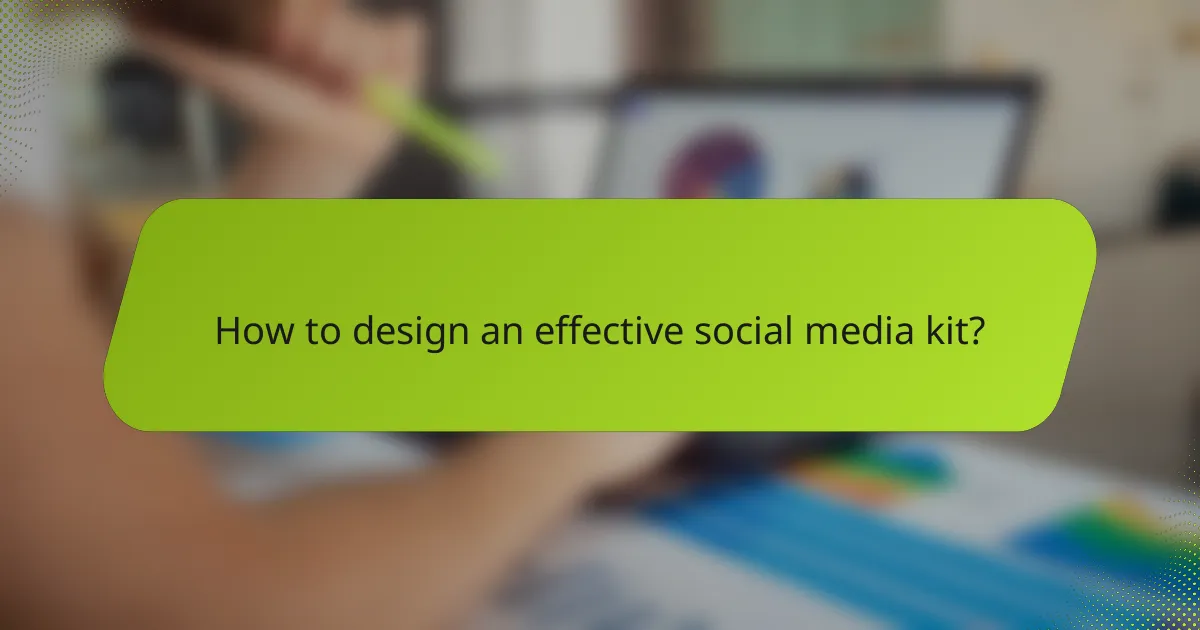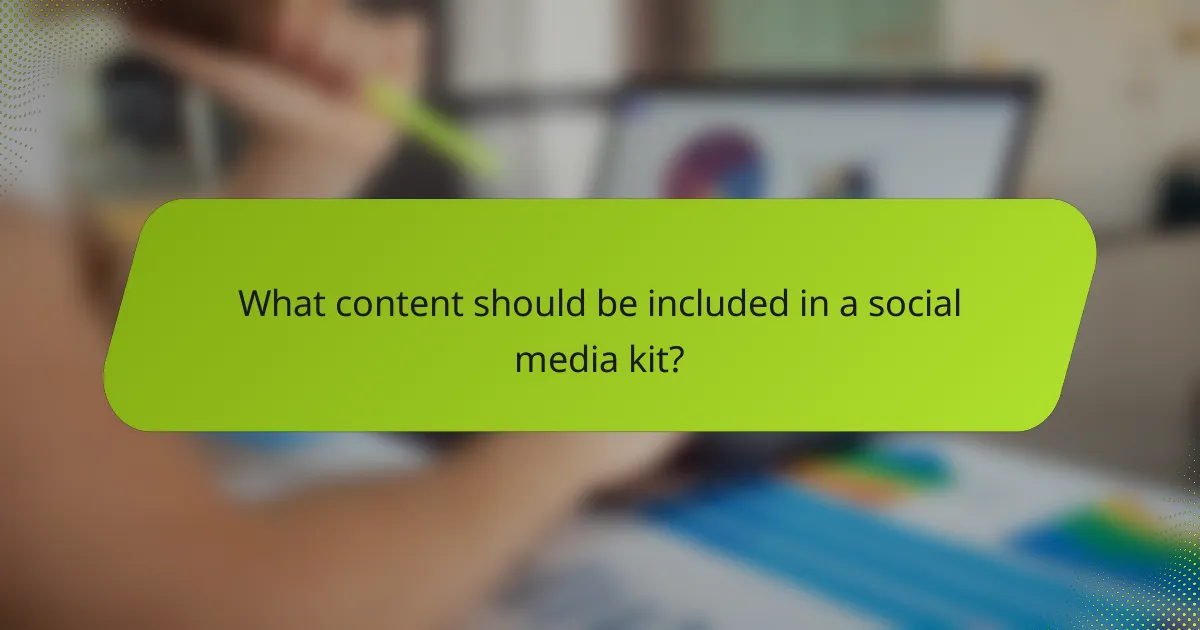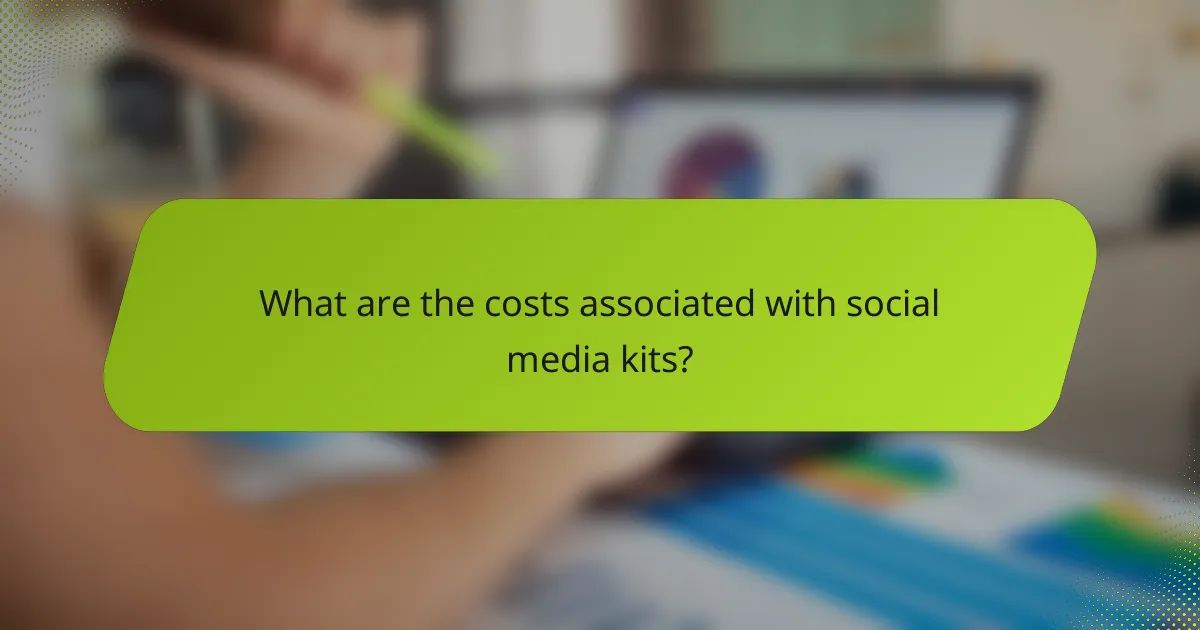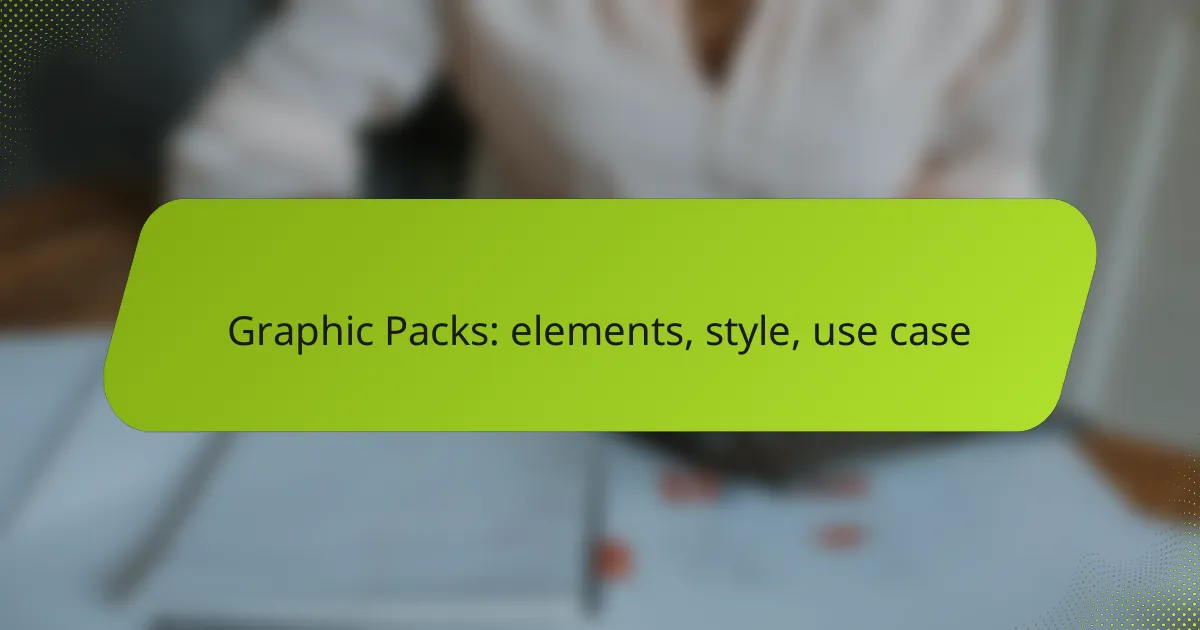Creating an effective social media kit is essential for enhancing your brand’s visibility and engagement across various platforms. It should include a cohesive collection of branded materials, such as logos, sample posts, and guidelines, all designed to communicate your brand’s identity clearly. By tailoring your kit to the specific features of each platform, you can optimize your content for maximum impact and reach your target audience effectively.

What are the best social media platforms for marketing?
The best social media platforms for marketing depend on your target audience and content type. Each platform offers unique features that can enhance brand visibility and engagement.
Facebook for audience reach
Facebook is one of the largest social media platforms, making it ideal for reaching a broad audience. With billions of active users, businesses can leverage targeted advertising to connect with specific demographics based on interests, behaviors, and location.
Consider using Facebook’s features like Groups and Events to foster community engagement. Regularly posting content and utilizing Facebook Live can also enhance visibility and interaction with followers.
Instagram for visual content
Instagram excels in visual storytelling, making it perfect for brands that rely on imagery. High-quality photos, videos, and Stories can effectively showcase products and engage users.
Utilize Instagram’s shopping features to allow users to purchase directly through the app. Collaborating with influencers can also amplify your reach and attract new followers who resonate with your brand’s aesthetic.
Twitter for real-time engagement
Twitter is designed for quick, real-time interactions, making it suitable for brands that want to engage in conversations and trending topics. The platform’s character limit encourages concise messaging and immediate responses.
Use hashtags strategically to increase visibility and participate in trending discussions. Regularly engaging with followers through replies and retweets can help build a loyal community around your brand.
LinkedIn for B2B networking
LinkedIn is the premier platform for B2B marketing, ideal for professionals looking to network and share industry insights. It allows businesses to establish authority and connect with potential clients and partners.
Creating informative content, such as articles and case studies, can position your brand as a thought leader. Participating in LinkedIn Groups can also enhance visibility and foster valuable connections within your industry.
TikTok for younger demographics
TikTok is rapidly gaining popularity among younger audiences, making it a powerful platform for brands targeting Gen Z and Millennials. Creative, short-form videos can capture attention and encourage user interaction.
Consider leveraging trends and challenges to create engaging content that resonates with users. Collaborating with TikTok influencers can also help amplify your message and reach a wider audience effectively.

How to design an effective social media kit?
An effective social media kit is a cohesive collection of branded materials that communicate your brand’s identity and messaging across various platforms. It should be visually appealing, easy to navigate, and optimized for different devices to ensure maximum engagement.
Use branded templates
Branded templates provide a consistent look and feel for your social media content, making it instantly recognizable. Utilize tools like Canva or Adobe Spark to create templates that reflect your brand’s style, including logos, fonts, and layouts.
Ensure these templates are adaptable for various content types, such as posts, stories, and banners. This flexibility allows you to maintain brand integrity while catering to different platform requirements.
Incorporate high-quality visuals
High-quality visuals are crucial for capturing attention on social media. Use professional images, graphics, and videos that align with your brand’s message and aesthetic. Stock photo websites or custom photography can enhance your kit’s appeal.
Consider the resolution and format of your visuals to ensure they display well across all devices. Aim for images that are at least 1080 pixels wide for optimal clarity on most platforms.
Ensure mobile responsiveness
With a significant portion of social media users accessing content via mobile devices, ensuring your social media kit is mobile responsive is essential. Design elements should be easily viewable and navigable on smaller screens.
Test your visuals and layouts on various devices to confirm they maintain their integrity. Use tools like Google’s Mobile-Friendly Test to identify any issues that may affect user experience.
Maintain consistent color schemes
A consistent color scheme reinforces your brand identity and enhances visual coherence across your social media kit. Choose a palette that reflects your brand’s personality and is suitable for your target audience.
Limit your color choices to a few primary colors and a couple of accent colors to avoid overwhelming your audience. Use tools like Adobe Color to create harmonious color combinations that work well together.

What content should be included in a social media kit?
A social media kit should include essential content that represents your brand and provides clear guidance for effective online engagement. Key elements include brand guidelines, sample posts and captions, logos and graphics, and contact information.
Brand guidelines
Brand guidelines outline the visual and verbal identity of your brand, ensuring consistency across all social media platforms. This includes your brand’s color palette, typography, tone of voice, and any specific messaging that should be used or avoided.
When creating brand guidelines, consider including examples of acceptable and unacceptable uses of your logo, as well as any legal requirements related to branding. This helps maintain a cohesive brand image and prevents misrepresentation.
Sample posts and captions
Sample posts and captions provide a practical reference for how to communicate on social media. These examples should reflect your brand’s voice and style, showcasing various types of content such as promotional messages, engagement posts, and informative updates.
Include a mix of formats, such as text, images, and videos, to demonstrate versatility. Aim for a range of 5-10 samples that can be adapted for different platforms, ensuring they resonate with your target audience.
Logos and graphics
Logos and graphics are crucial for brand recognition on social media. Include high-resolution versions of your logo in different formats (e.g., PNG, JPEG, SVG) to accommodate various uses and platforms.
Additionally, consider providing templates for social media posts or stories that incorporate your branding elements. This ensures that all visual content aligns with your brand identity and maintains a professional appearance.
Contact information
Contact information is essential for facilitating communication and collaboration. Include details such as email addresses, phone numbers, and social media handles for key team members or departments responsible for social media management.
Make sure this information is up-to-date and easily accessible, as it encourages potential partners or clients to reach out for inquiries or collaborations. Providing a dedicated contact person can streamline communication and enhance engagement opportunities.

What are the costs associated with social media kits?
The costs associated with social media kits can vary widely based on design choices, content creation, and platform requirements. Businesses should consider software subscriptions, designer fees, and template purchases when budgeting for their social media presence.
Design software subscriptions
Design software subscriptions are a fundamental cost for creating social media kits. Popular tools like Adobe Creative Cloud or Canva offer monthly or annual plans, typically ranging from $10 to $50 per month, depending on the features and number of users. Businesses should evaluate their design needs to choose the most cost-effective option.
For those who only need basic features, free versions of design software may suffice, but they often come with limitations. Consider the trade-off between cost and functionality when selecting a subscription.
Freelance designer fees
Hiring freelance designers can significantly impact the budget for social media kits. Rates for freelancers can vary based on experience and location, typically ranging from $25 to $150 per hour. For a complete kit, businesses might expect to pay anywhere from a few hundred to several thousand dollars.
When working with freelancers, it’s essential to communicate clear expectations and provide detailed briefs to avoid misunderstandings and additional costs. Consider establishing a fixed price for the entire project to manage expenses effectively.
Template purchase costs
Purchasing templates for social media kits can be a cost-effective way to maintain a professional look without extensive design work. Template costs can range from $10 to $100, depending on the complexity and the platform they are designed for. Websites like Envato or Creative Market offer a variety of options suitable for different needs.
When selecting templates, ensure they are customizable and compatible with your design software. Investing in high-quality templates can save time and enhance the overall aesthetic of your social media presence.

How to evaluate the effectiveness of a social media kit?
To evaluate the effectiveness of a social media kit, focus on measurable outcomes such as engagement, reach, and conversion rates. Analyzing these metrics helps determine how well the kit meets its objectives and resonates with the target audience.
Track engagement metrics
Engagement metrics are crucial for assessing how users interact with your social media kit. Key indicators include likes, shares, comments, and overall interaction rates. Monitoring these metrics provides insight into what content resonates most with your audience.
Consider using tools like Google Analytics or social media insights to track these metrics over time. A good practice is to set benchmarks based on past performance or industry standards, aiming for engagement rates typically ranging from 1% to 5% for most platforms.
Regularly review these metrics to identify trends and adjust your strategy accordingly. For example, if a particular post format consistently garners higher engagement, consider incorporating more of that style into future kits.



